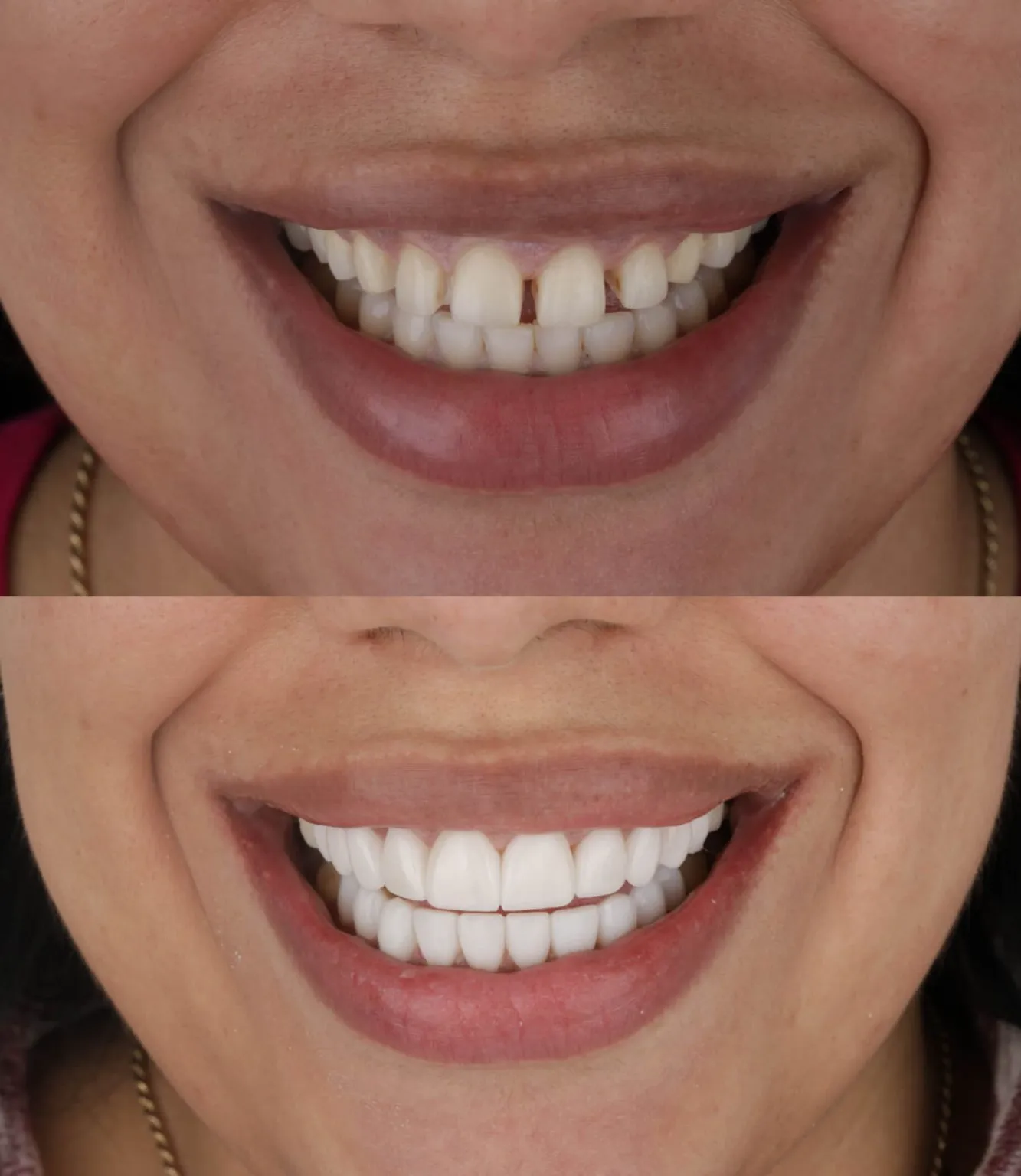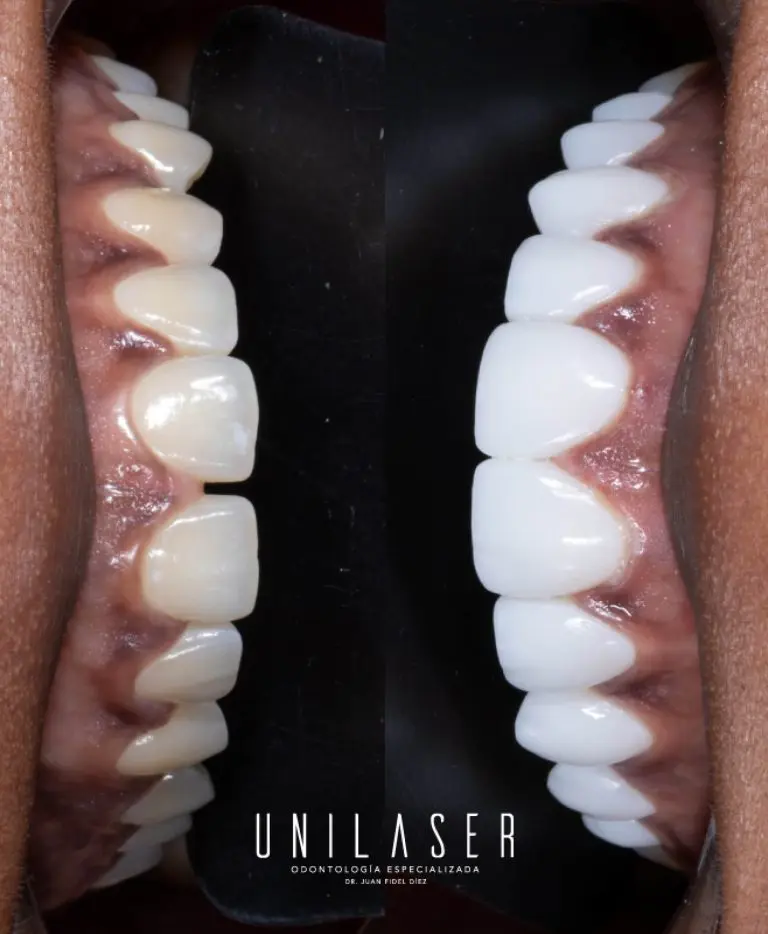
Diastema – Closure of separated teeth or with spaces
If you have a diastema or separation of teeth or with large spaces between them, at Unilaser we help you solve it with our treatments to close separated teeth so that you have an aligned and aesthetically optimal smile.
What is a dental diastema?
It is the name given to the gap between two teeth. This term is largely used to refer to the gap between the upper front teeth. When present, some treatment for closing separated teeth is usually sought to aesthetically improve the smile.
Normally, the diastema solution is sought precisely to strengthen the person’s self-esteem and security. For this there are various methods that can be used.

Treatments at Unilaser to fix a diastema
At UNILASER we have a group of specialists who can provide you with different solutions to close interdental spaces (diastemas) and give harmony to your smile, such as:
Bonding veneers
A dental cosmetic procedure utilized to improve the appearance of the teeth.
Side edges in composite
In this procedure, composite resin material is applied and molded to the side edges of the teeth to close gaps.
Porcelain veneers
They are very thin but resistant sheets, made of high quality material. These veneers are designed to cover the front surface of the teeth, providing a natural and attractive appearance. Porcelain veneers are an option that is widely used today.
Orthodontics
The primary goal of orthodontic treatment is to correct misaligned teeth and jaws, improving both the function and appearance of your smile. Traditional orthodontic treatment involves the use of braces, which consist of brackets attached to the teeth and connected by wires.
We carry out virtual consultations anywhere in the world, wherever you are. Live the experience of having a smile the UNILASER style
Space closure
Below you can see the before and after of the Space Closure procedures we have performed at Unilaser.
Frequently asked questions about diastemas
How common are diastemas?
It is a relatively common dental condition. The prevalence of diastema can vary between different populations and individuals. While it is most commonly seen in children during the transition from primary to permanent teeth, it can also occur in adults.
Why do we get diastemas?
Teeth gaps or diastema can be caused by several factors. Size discrepancy between teeth, habits such as thumb sucking or tongue sticking out, tooth loss, jaw misalignment or genetics are some of the main causes.
Can you close all the spaces with orthodontics?
Yes, orthodontics with braces or clear aligners (Invisalign) is effective in closing many types of gapped teeth. However, the ability to completely close all spaces depends on the severity and nature of the spaces the person has.
How are the spaces closed that are provoked by the loss of teeth?
Gaps caused by tooth loss can be closed through various dental procedures. Two common options are dental implants with crowns and dental bridges. Orthodontics can also help, although not always, since the space left after losing a tooth is usually considerably large.
How long does it take to close a diastema?
The duration of diastema closure varies depending on several factors, such as each patient’s case, the treatment method chosen, and the individual’s response to treatment.
Orthodontic treatment with braces or clear aligners can take several months to a few years, while dental procedures, such as veneers or resin edging, can be completed in one or two appointments.
How can you move the teeth without braces?
If you are looking to close spaces between gapped teeth without braces, there are alternative options available. One option is with invisible orthodontics (Invisalign), the other option is resin or porcelain veneers or also with resin edges. In this procedure, a tooth-colored composite resin material is applied and molded over the teeth to close gaps.
We carry out virtual consultations anywhere in the world, wherever you are. Live the experience of having a smile the UNILASER style
